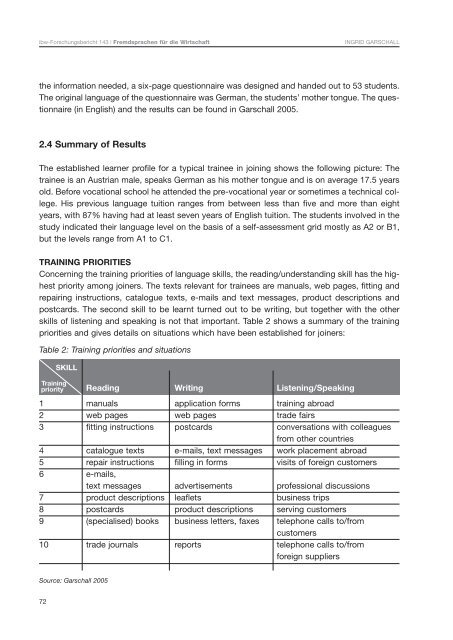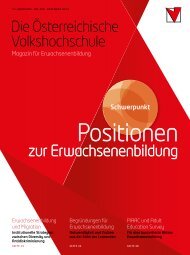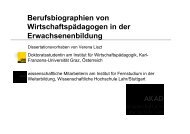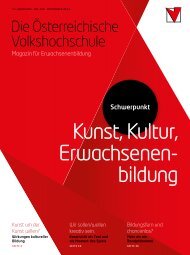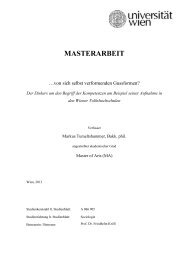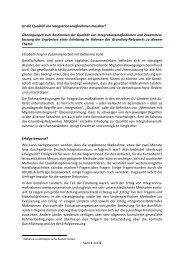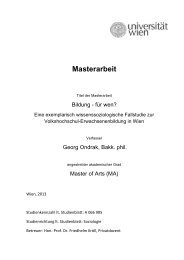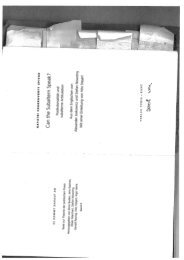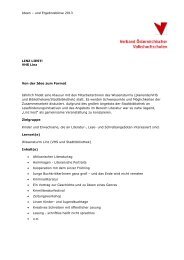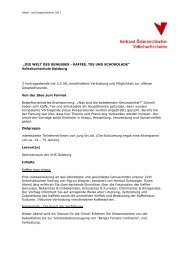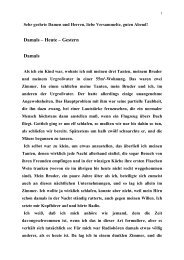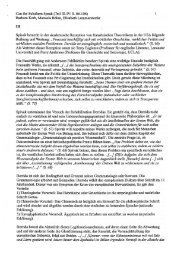Der sichere Umgang mit fremden Sprachen und Kulturen stellt heute ...
Der sichere Umgang mit fremden Sprachen und Kulturen stellt heute ...
Der sichere Umgang mit fremden Sprachen und Kulturen stellt heute ...
Sie wollen auch ein ePaper? Erhöhen Sie die Reichweite Ihrer Titel.
YUMPU macht aus Druck-PDFs automatisch weboptimierte ePaper, die Google liebt.
ibw-Forschungsbericht 143 | Fremdsprachen für die Wirtschaft INGRID GARSCHALL<br />
the information needed, a six-page questionnaire was designed and handed out to 53 students.<br />
The original language of the questionnaire was German, the students’ mother tongue. The questionnaire<br />
(in English) and the results can be fo<strong>und</strong> in Garschall 2005.<br />
2.4 Summary of Results<br />
The established learner profile for a typical trainee in joining shows the following picture: The<br />
trainee is an Austrian male, speaks German as his mother tongue and is on average 17.5 years<br />
old. Before vocational school he attended the pre-vocational year or sometimes a technical college.<br />
His previous language tuition ranges from between less than five and more than eight<br />
years, with 87% having had at least seven years of English tuition. The students involved in the<br />
study indicated their language level on the basis of a self-assessment grid mostly as A2 or B1,<br />
but the levels range from A1 to C1.<br />
TRAINING PRIORITIES<br />
Concerning the training priorities of language skills, the reading/<strong>und</strong>erstanding skill has the highest<br />
priority among joiners. The texts relevant for trainees are manuals, web pages, fitting and<br />
repairing instructions, catalogue texts, e-mails and text messages, product descriptions and<br />
postcards. The second skill to be learnt turned out to be writing, but together with the other<br />
skills of listening and speaking is not that important. Table 2 shows a summary of the training<br />
priorities and gives details on situations which have been established for joiners:<br />
Table 2: Training priorities and situations<br />
Training<br />
priority Reading Writing Listening/Speaking<br />
1 manuals application forms training abroad<br />
2 web pages web pages trade fairs<br />
3 fitting instructions postcards conversations with colleagues<br />
from other countries<br />
4 catalogue texts e-mails, text messages work placement abroad<br />
5 repair instructions filling in forms visits of foreign customers<br />
6 e-mails,<br />
text messages advertisements professional discussions<br />
7 product descriptions leaflets business trips<br />
8 postcards product descriptions serving customers<br />
9 (specialised) books business letters, faxes telephone calls to/from<br />
customers<br />
10 trade journals reports telephone calls to/from<br />
foreign suppliers<br />
Source: Garschall 2005<br />
72<br />
SKILL


